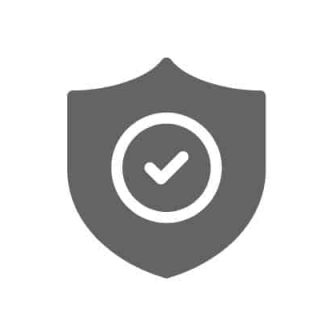In Brief: How To Safely Use An Electric Chainsaw
To safely use an electric chainsaw, first ensure you have the PPE required. Check the chain brake and catcher, then tension the chain and sharpen it. Add bar and chain oil. Route the power cord safely and plan each cut before you make it. Store the chainsaw in a cool, dry place under a dust sheet.
Even if you have used a gas chainsaw before, there are some differences with electric chainsaws that necessitate a refresher on proper chainsaw technique.
This step-by-step guide will show you how to safely use an electric chainsaw.

How To Safely Use An Electric Chainsaw
Materials
- A safety helmet.
- Goggles.
- Ear defenders.
- Steel-toed boots.
- Heavy-duty work gloves.
- Chainsaw chaps.
- A long-sleeved shirt.
Tools
- Chainsaw
Instructions
Step 1: Wear Personal Protective Equipment -
Whenever you use a chainsaw you must wear the appropriate safety gear. Chainsaw operation can be dangerous, so ensure you protect yourself whenever you use one.
Always wear:
A safety helmet.
Goggles.
Ear defenders.
Steel-toed boots.
Heavy-duty work gloves.
Chainsaw chaps.
A long-sleeved shirt.
You could also wear a chainsaw jacket, which will protect your neck and shoulders from falling branches. However, as they are quite thick you may not be able to wear one during the summer months.
Step 2: Check The Safety Features
Chainsaws have a variety of safety features that help protect you should something go wrong. You must ensure they are operational before use.
With the battery out, engage the chain brake and try to turn the chain. If the chain still turns on the bar, your chain brake is faulty and must be repaired.
Inspect for damage on the chain catcher, and ensure the throttle trigger does not stick when you squeeze it.
Step 3: Check Chain Tension & Sharpness
Your chain should be tight enough on the bar that it does not sag underneath, but not so tight that there is no give in it if you give it a pull.
You may have a dial for chain tension, or you may need to loosen the bar bolts and tighten the chain with a screwdriver in the tightening screw.
Every time you use your chain, inspect it for damage, and use a file guide to sharpen it. A stroke or two on each tooth will suffice.
Step 4: Check Lubrication
Your chainsaw requires bar and chain oil to act as a lubricant. Having inadequate lubrication can lead to damage to the tool and excess heat build-up.
Locate your oil reservoir and keep it topped up with bar and chain oil.
You can check that you have good lubrication by throttling the saw with the bar over a piece of paper or cardboard. If you can see flecks of oil on the paper, your lubrication is fine.
Step 5: Route The Power Cord
Electric chainsaws draw power from the mains via a power cord. You must route the power cord and any extension leads safely.
You will probably have to buy an extension cord for your chainsaw as you are rarely provided one. Ensure that the cord is rated for the amp draw of your chainsaw.
Keep the cord out of any water and route it so that it does not interfere with the area in which you are cutting.
Step 6: Plan The Cut
Before cutting, ensure that you know exactly how you are going to perform it. Plan the angle of attack, clear the area of obstacles, and try to work out what will happen during the cut.
When cutting up a felled tree, you will need to remove branches.
The ones on top will fall and the ones underneath could cause the trunk to shift, so plan your positioning in such a way that you can quickly abort the cut and stop the saw.
Plan an escape route in case you need it and make sure nothing limits your maneuverability.
Step 7: Start The Saw
Ensuring that the power cord is not in front of you or wrapped around your foot, you can start your chainsaw.
Electric chainsaws start with the press of a button. Press it now.
Depress the throttle interlock, then gently squeeze the throttle trigger to ensure everything functions correctly. If it does, perform the cut.
Step 8: Perform The Cut
Stand with a wide base and keep your body out of the line of the cut.
Do not hover over the chainsaw as, in the event of kickback, you are putting your head in danger.
Go slowly. If anything unexpected happens, or you spot a potential problem, engage the chain brake and stop the saw. Plan the cut again before carrying on.
You can operate the saw for as long as you need to, but beware of overheating. If the chainsaw gets too hot, stop it and allow it to cool before carrying on.
Step 9: Store Your Electric Chainsaw Safely
After use, unplug the cord and wrap it in loose, neat circles. If you wrap the cord too tightly then it could damage it.
Store the chainsaw in a cool, dry place, with a dust cover to prevent having to clean it before the next use.
It is best to keep it elevated, especially if you store it in a garage or shed. Vermin like to chew through wires, so the last thing you want is to keep the power cord at ground level.
Summary
We hope this guide has helped you learn how to safely use an electric chainsaw for the first time.
Now that you have all the tools you need, you can get on with using your new corded electric chainsaw.
If you have any questions or comments about this guide or electric chainsaws in general, please feel free to leave them in the section below.
